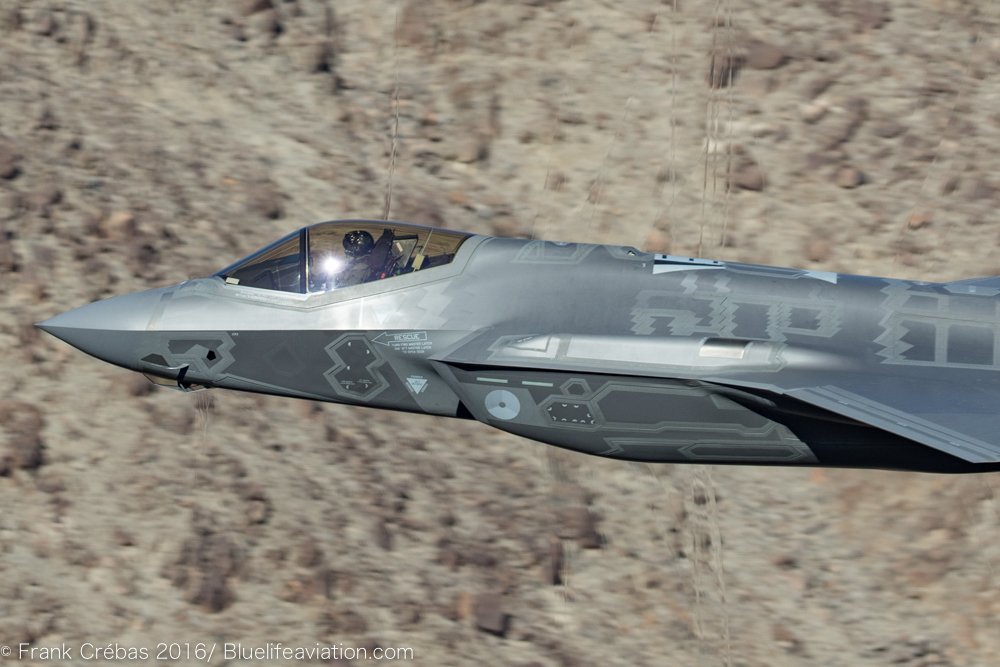An F-35 performed some high-speed passes through the famous “Jedi Transition” in the Death Valley. Generating visible shockwaves.
The image in this post was taken by world-renowned Dutch photographer Frank Crébas in the Death Valley on Dec. 2, 2016.
It shows one of the RNlAF (Royal Netherlands Air Force) F-35A Lightning II with the 323 TES (Test & Evaluation Squadron), the Dutch unit based at Edwards Air Force Base and responsible for the Operational Test and Evaluation Phase (OT&E) as part of the Joint Operational Test Team, piloted by Maj. Ian “Gladys” Knight, the 323TES’s Director of Operations, flying at low altitude through the famous Rainbow Canyon, located adjacent to Death Valley.
As already explained here, the flight through the canyon (dubbed “Star Wars Canyon” for its resemblance to the ones where some of the most famous scenes of the Lucas’s saga were filmed) out into the expanse of Death Valley and referred to as the “Jedi Transition,” has become very popular with photographers from all around the world who daily exploit the unique opportunity to shoot fast jets, warbirds and also airlifters during their transit through the canyon.
Interestingly, this time the F-35s performed a really high-speed pass.
Take a look:
Two RNLAF #F35 jets blasting through the “Star Wars Canyon” low level flying route during a training mission. #airpower @Kon_Luchtmacht pic.twitter.com/kYFAWe8y9F
— Bob (@hmmbob) December 5, 2016
The aircraft was so fast it generated visible shock waves Crébas got thanks to his EOS 1DX mk II, with a EF-200-400 lens, at 1/2500 shutter speed.
“It was extremely windy out there and made it almost impossible to shoot with such a lens.. But I got it nailed ;-)” Frank wrote in a message to The Aviationist.
The speed of sound at the surface of the earth is a measure of the speed that a vibration travels through the atmosphere. At sea level, this speed is approximately 760 miles per hour (661 knots).
At speed lower than the transonic region, air flows smoothly around the airframe; in the transonic region, airflow begins to reach the speed of sound in localized areas on the aircraft, including the upper surface of the wing and the fuselage: shock waves, generated by pressure gradient resulting from the formation of supersonic flow regions, represent the location where the air moving at supersonic speed transitions to subsonic.
Check out more Frank Crébas’s stunning photographs at the Bluelife Aviation website and Facebook page.
Related articles




















